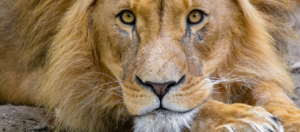Hunting, Imperialism, and the Wilderness
This module explores the ways humans hunted, poached, and preserved wildlife during the nineteenth and twentieth centuries, particularly in imperial contexts. It looks at the global circulation of ideas about empire, hunting, wildlife, and their practices by focusing on case-studies in Britain, India, eastern Africa, and the United States. Through four to six class meetings, the module investigates how the ruling class defined appropriate methods and practices of hunting, and then used those definitions to deny colonial subjects and the rural poor access to wildlife and wild spaces. It demonstrates how these deliberately cleared spaces contributed to our contemporary understandings of conservation and national parks.
Original version authored by Erica Mukherjee
Readings and Primary Sources
Module Lesson Plan:
- Hunting-Wilderness-and-Imperialism-0.0-Module lesson plan
- Hunting-Wilderness-and-Imperialism-0.1-Schedule at a glance
- Hunting-Wilderness-and-Imperialism-0.2-About this module for students
Lesson 1:
Lesson 2:
- Hunting-Wilderness-and-Imperialism-2.1-Reading 2-Hunting and masculinity in Eastern Africa
- Hunting-Wilderness-and-Imperialism-2.2-Primary Source-Kipling
- Hunting-Wilderness-and-Imperialism-2.3-Primary Source-Patterson
Lesson 3:
- Hunting-Wilderness-and-Imperialism-3.1-Reading 3-Clearing the way for national parks in the United States
- Hunting-Wilderness-and-Imperialism-3.2a-Primary Source-Catlin letters and notes
- Hunting-Wilderness-and-Imperialism-3.2b-Primary Source-Catlin selected paintings
Lesson 4:
- Hunting-Wilderness-and-Imperialism-4.1-Reading 4-The human experience of wildlife in India
- Hunting-Wilderness-and-Imperialism-4.2-Primary Source-Corbett
Conclusion:

